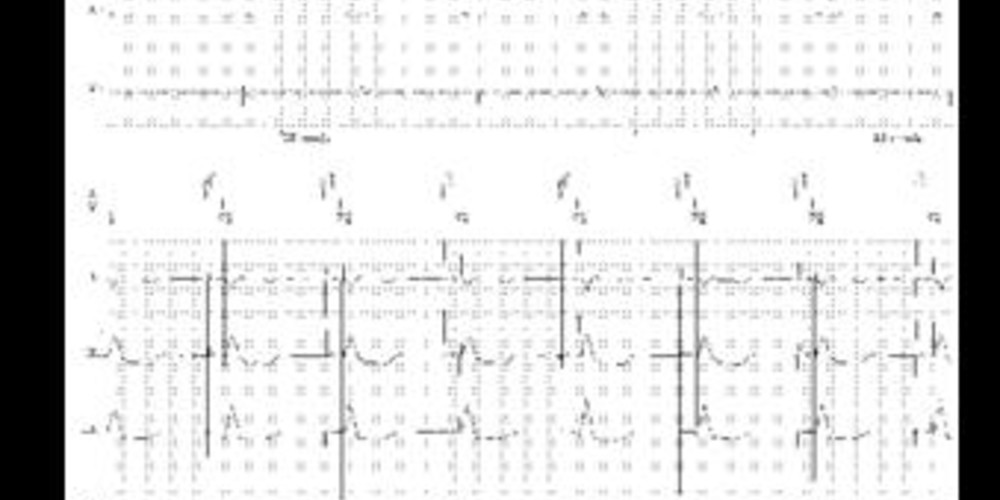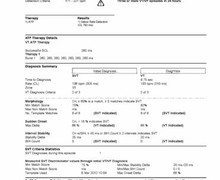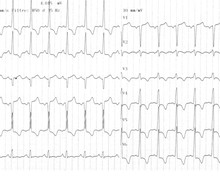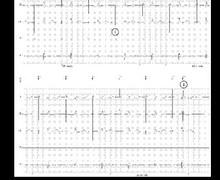DDD mode
Tracing
Manufacturer Biotronik
Device PM
Field Pacing Modes
N° 1
Patient
71-year-old man implanted with a dual-chamber BiotronikTM pacemaker for symptomatic sinus dysfunction with prolonged PR interval; programming in DDD mode at 60 bpm; 6 months after implantation, ventricular pacing at 100% and atrial pacing at 85%; during the device follow-up control, programming of various pacing modes and recording of the tracings; this first tracing corresponds to the programmed mode (DDD 60 bpm).

Graph and trace
In this and the following tracings, the first 3 lines correspond to ECG lead I, lead II and lead III, the fourth and fifth lines to the atrial EGM and ventricular EGM, respectively;
- atrial pacing and ventricular pacing.
Other articles that may be of interest to you







The basic principle of the DDD mode is to synchronize ventricular pacing with atrial sensing (triggered function) or atrial pacing. A spontaneous atrial or ventricular activity sensed outside the refractory period respectively inhibits atrial or ventricular pacing (inhibited function). This mode thus allows atrioventricular (AV) synchrony to be preserved for low sinus rates up to high rates (maximum tracking rate limit). The programming of the DDD mode hence appears satisfactory in this patient. However, follow-up highlighted a permanent ventricular pacing, which could correspond to a functioning deemed normal and appropriate. Nonetheless, this patient exhibits preserved AV conduction in spite of a prolonged PR interval. One of the priorities of the programming of a pacemaker is to avoid unnecessary right ventricular pacing. This prevents excessive battery drainage and prolongs the life of the device and, above all, avoids right ventricular pacing which is associated with short, medium and long term effects along with adverse effects on ventricular remodeling and on the occurrence of atrial arrhythmias. Indeed, right ventricular pacing induces an asynchronous interventricular and intraventricular activation and relaxation sequence. A high percentage of ventricular pacing in a patient with preserved AV conduction should alert the physician at the time of the interrogation and raise the possibility of using specific algorithms favoring spontaneous conduction.